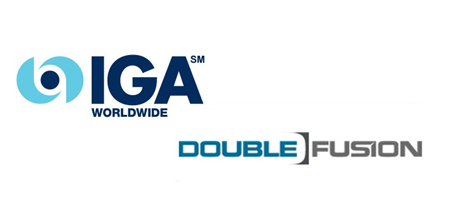What Happened to IGA Worldwide & Double Fusion?
For those of you who don’t already know, early 2012 saw in-game advertising networks Double Fusion and IGA Worldwide mysteriously go out of business. Both companies were phenomenal pioneers in the industry, and helped make the in-game ad industry the success it is today. In the blog post below, we’re going to take a look at some of the reasons and factors that led to their unfortunate decline.
Back in 2006-2007, the in-game advertising industry really started to pick-up and gain global recognition due to several Dynamic In-Game Advertising networks competing for ad space. These networks included companies like Massive Incorporated, IGA Worldwide, and Double Fusion.
Things looked great for a few years, with constant media coverage of the industry, huge investments from venture capital firms, and growing interest from the big media buying agencies. These networks flourished for awhile by having big name game developers like Electronic Arts, Konami, Atari, etc, join the networks where both parties could continually generate advertising revenue even after a video game’s release.
Fast forward a couple years, and things started to go downhill for these in-game ad networks. IGA Wordwide and Double Fusion saw large-scale staff layoffs, and were unable to meet revenue goals. Then all of a sudden in early 2012 IGA Wordwide and Double Fusion just ceased to exist. Both companies had static homepage messages on their websites saying “Website Under Construction”, and shortly after that the websites were taken offline entirely.
So where did things go wrong? We’ve identified two main issues below:
Having too many Publishers
These aforementioned in-game ad networks like Double Fusion for example, were always boasting in press releases about the dozens of publishers (aka game development companies) participating in their network. Having too many publishers onboard is actually detrimental to an in-game ad network, because it dilutes the amount of revenue earned per publisher. A more sustainable goal for example, would be to form key relationships with no more than two large game developers and then deliver ads across numerous titles within their portfolio, making sure to include a variety of genres. In contrast to this, past networks would secure the rights to deliver ads into just one or two video games per publisher, which then simply increased the amount of publishers in the network and decreased the payouts per publisher.
What makes an in-game advertising network different than a traditional online advertising network, is that a game publisher is expecting BIG revenue figures from advertising, because these are BIG companies that have to justify the resources of integrating an SDK. Whereas a web publisher who owns a modest blog and signs up for Google Adwords, isn’t going to necessarily be expecting 5-6 figure revenue stream each month. A company like Google Adwords can leverage the low expectations of site owners, and build a larges network containing millions of publishers.
This is why an in-game advertising is fundamentally different than an online ad network – with in-game advertising, the goal isn’t to lock-in as many publishers as possible, it’s to make the publishers as happy as possible.
Taking on too much capital
Taking on too much venture capital and human capital can be the biggest mistake for an in-game advertising network. Both IGA Worldwide and Double Fusion took on a ton of outside funding according to various press releases. Although outside investment is a great way to grow and expand a business, it can also bring with it a lot of pressure and sometimes unrealistic revenue expectations by advisors. One of our benefits here at RapidFire was be able to grow organically without outside funding, which gave us the ability to make decisions and not worry about meeting tough revenue goals.
To learn more about our Dynamic In-Game Advertising services feel free to either Contact us, or learn more at: http://www.rapidfire.com/portfolio/dynamic-in-game-advertising/


